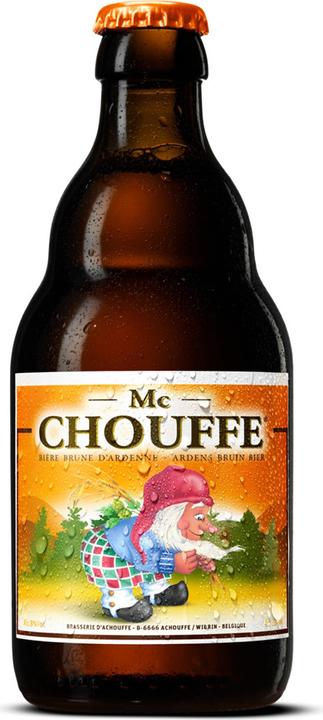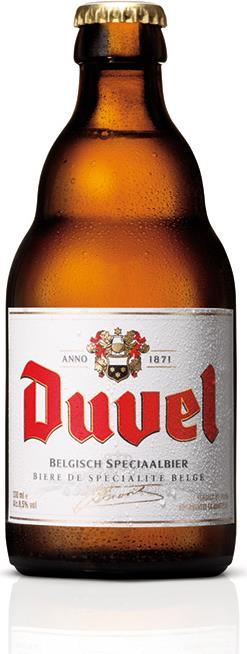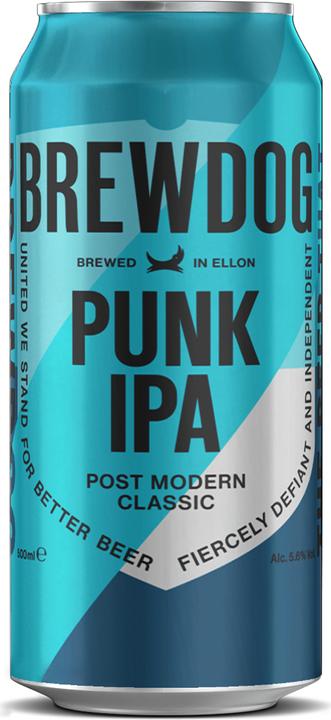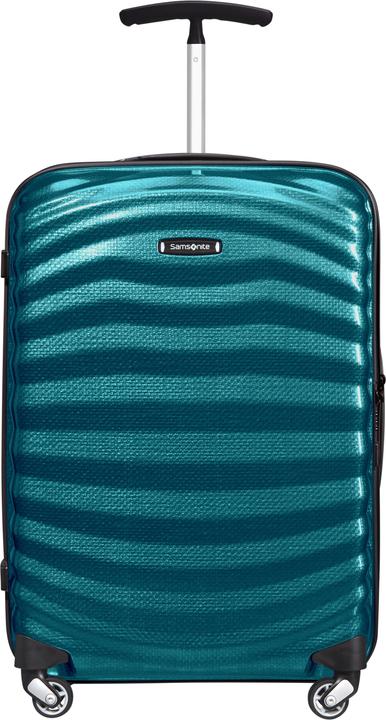
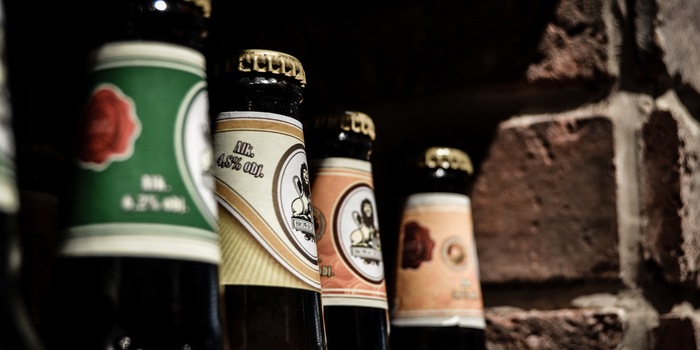
Exploring the world of beer
It’s easy to lose track of all the different types of beer on offer – and that’s when you’re sober. With this guide to the world of beer, you’ll be ready for your next night out or in.
Abbey and trappist beer: «Liquid does not break the fast.»
At 6 – 12%, the alcohol content of Trappist beers is on the higher end of the abbey beer scale. At the time of writing, there are roughly 27 types of Trappist beers available. Those designated «Bière Trappiste» are subject to strict criteria. As well as being top-fermented, they have to be bottle-matured. In terms of taste, they are mostly sweet and strong in flavour, but you can also get beers in this category with dry notes.
We have the Latin saying «liquida non frangunt ieiunium» – in English «liquid does not break the fast» – to thank for these two types of beer.
See all abbey + Trappist beers
Amber and red ale: known for their characteristic colour
Amber ale is the catch-all term for beers with that typical amber-like colour. It is brewed using top-fermented yeast, hops, mostly dark malt, water and occasionally herbs. This kind of beer also goes by the name of «Grut» ale, which derives from the old German for herbs. As far as taste goes, Amber ale’s malt and caramelly notes are closest in flavour to an English pale ale.
Red ale is also brewed with top-fermented yeast, but everything else that goes into the drink is hard to define. This is because the name of the beer reflects more the colour than its taste. What is for certain, though, is that you can tell the difference between the Irish-style red ale and the American version.
The hop variety is instrumental in determining the beer’s flavourGolden ale: the light beers
Lager and Pilsner: the Czech pearl and Swiss favourite
Pilsner is the most popular beer in Switzerland. A distinct hops aroma characterises this moderately bitter, smooth beer that goes down easily. Variants on this type of lager were born out of the Pilsner brewing style. In fact, Pilsner gave rise to low-alcohol beer, dark lager, wood-aged beer as well as alcohol-free beer.
Lambic: Belgium’s speciality
Lambic beer can also be used to make Gueuze beer. In terms of flavour, Gueuze and Lambic are worlds apart. Gueuze is the result of storing a blend of young and old Lambic for a long period of time. This is what gives the beer its characteristic acidic taste, which isn’t a far cry from the flavour of champagne.
Malt – one of the main ingredients in beerPale ale and IPA: from England to India
Pale ale is a general term for an English bitter beer that has been top-fermented and usually bottle-matured. Beer in this form often has slightly more original wort and a better overall quality than a comparable bitter. As a general rule, pale ale contains a special, bronze-coloured malt. One variety of pale is India Pale Ale, which you may know as IPA.
IPA was first brewed in the 19th century at a time when India was still a British colony. To enable expats to drink beer while they were over there, lager was shipped out to India. But because of the long crossing, the beer often ended up going bad. They had to find a way to make the beer last. The solution was to brew with lots of hops and alcohol. As soon as the beer reached India, it was then thinned 1:1 with water.
Modern IPA is no longer thinned, but the higher alcohol and original wort content still remains and is combined with a powerful bitter note and a strong hops flavour. Many breweries give their IPAs a unique flavour by adding special ingredients.
Strong ale and Tripels: beer that lives up to its name
Strong ale is a name you could give to almost any beer that has a high original wort content. As you may know, the more original wort the beer contains, the more intense and full-bodied the flavour. Not surprisingly then, beers labelled strong ales tend to be full-bodied, aromatic and have a high alcohol content. They can be top- or bottom-fermented.
A Tripel is also known for its high original wort content. Strong brewing means the alcohol content in these beers is also fairly high – usually somewhere between 8 and 10%. This is made possible by large amounts of malt in the wort and the use of alcohol-tolerant yeast. Visually, the foam on a Tripel is appealing, and it gives a stable head.
Stout and porter: the dark side
Stout and porter are top-fermented beers that are usually dark in colour with a creamy head. Roasted malt gives the beer an almost black colour and accentuates the malt notes. Within the stout category, you’ll find a variety of different flavours and alcohol types.
Porter, for example, gets its name from the workers (porters) on the London docks who liked to drink the beer after work. At that time, the beer was identical to stout. Nowadays, porter has a lighter flavour. Most porter beers are malty and sweet in a caramelly way. This is followed by a dryer, distinct roasted taste, rounded off with hop bitterness.
Wheat beer in its many guises
Wheat beer is always top-fermented and has at least 50% wheat malt content. The term wheat beer encompases a variety of different beers. For instance, a wheat beer could be banana-flavoured, have clove notes or taste of nutmeg or vanilla. They’re all part of the same family of beers. Dark wheat beers can also have hints of malt and chocolate or roasted aromas. This medium to full-bodied group of beers has an average alcohol content of 4 – 5.5%.
The hops aroma in most wheat beers is almost undetectable. However, some experimental wheat beers are brewed with a distinct hops aroma, which is reminiscent of an IPA.
Friends, family, cats and good wine are my lifeblood.

